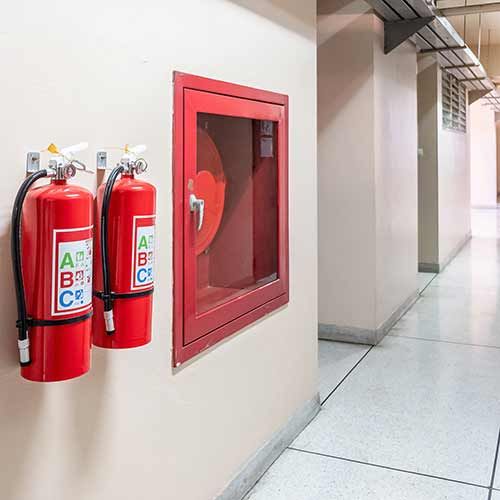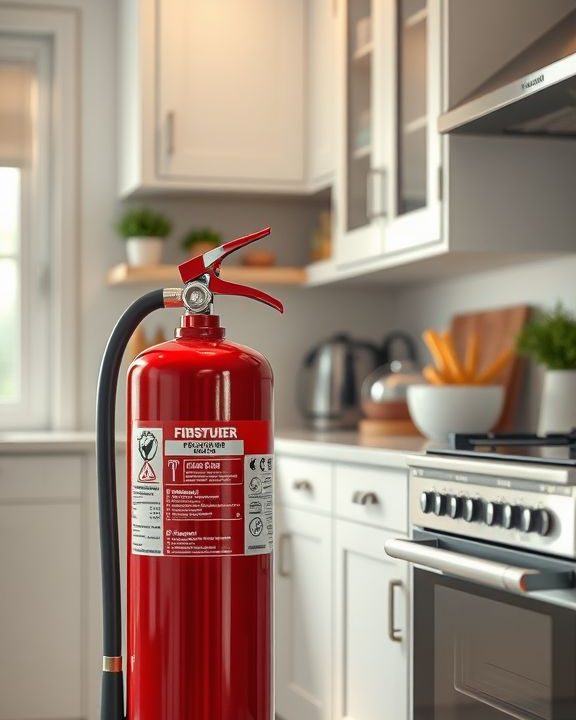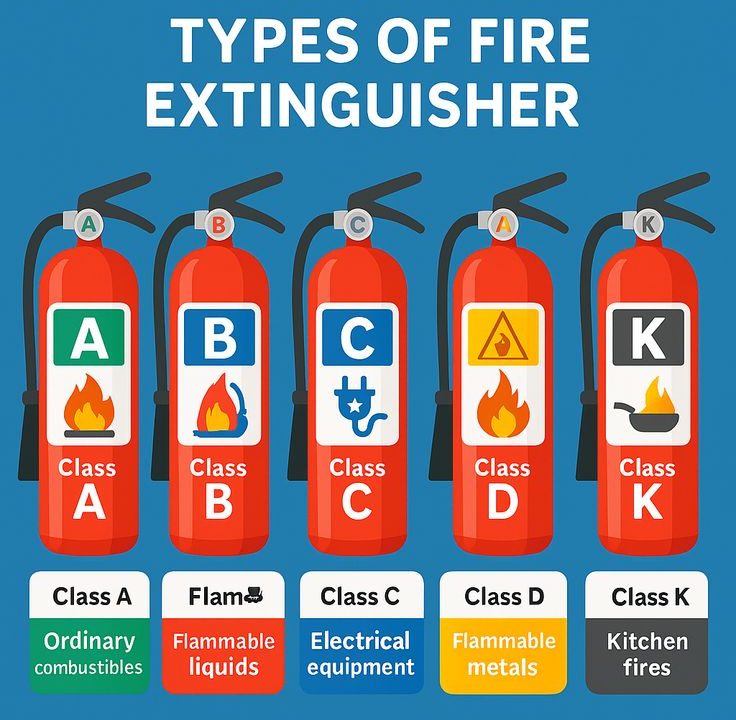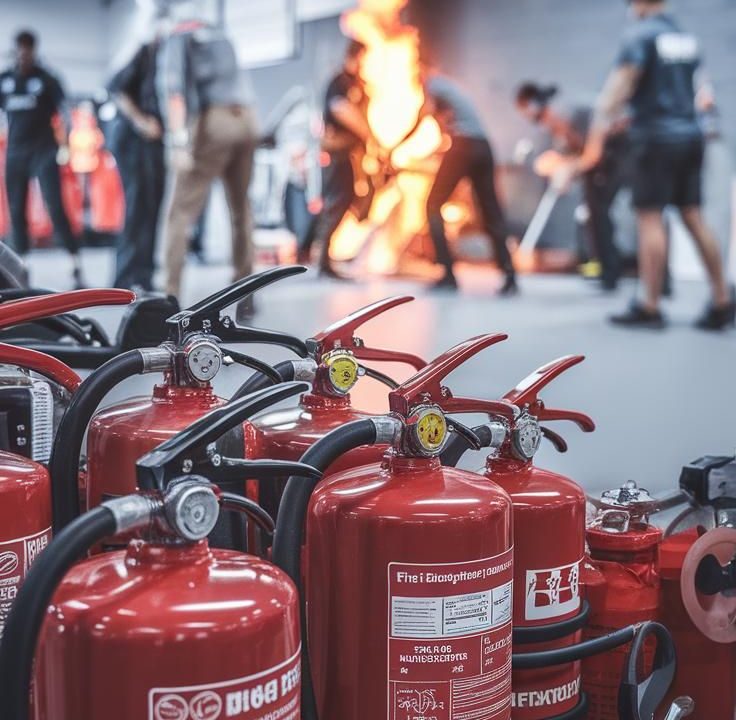How Often Do You Need to Replace Your Fire Extinguisher?

The Ultimate Guide to Fire Extinguishers: Types, Use, and Maintenance Tips
October 1, 2025
Understanding Different Types of Fire Extinguishers & Their Uses
October 1, 2025Fire breaks out. You get your extinguisher, pull the pin, and nothing occurs. The indicator was green, but the unit failed when it was most required.
This occurs daily in the workplaces around the country. Disposable extinguishers are supposed to be scrapped after 12 years, but most facilities handle them like permanent assets. Getting this right ensures your compliance.
It’s recommended to keep a small 1kg dry powder fire extinguisher that delivers when emergencies strike. But even quality units need proper replacement schedules to stay code-compliant.
Key Takeaways
- The life of disposable units is 12 years, and the life of the rechargeable units is 15-20 years of maintenance.
- Signs to look for when your fire extinguisher needs immediate replacement.
- Hydrostatic testing can’t be skipped, every 5-12 years, depending on extinguisher type.
- Annual service prevents failures, catches problems before they kill your protection.
Your Extinguisher is Failing Right Now
That red cylinder over your wall is alright. Green gauge, none visible. Corrosion of seals, separation of chemicals, and pressure drops occur on the inside. When you need it, it fails.
Hydrostatic testing of units that fail should be taken out of service. However, the majority of failures occur when real fires are involved – when lives are at stake.
The cost of dead extinguishers is higher than the cost of replacement. Budgets are ruined by fire damage, employee accidents, and budget losses occur more quickly than any equipment acquisition.
Fire Extinguisher Lifespan
- Disposable Fire Extinguisher Lifespan
Single-use units max out at 12 years from the manufacture date. Heat, humidity, and daily handling cut this shorter. That warehouse unit cooking in 90-degree heat? Replace it sooner.
- Rechargeable Fire Extinguisher Replacement
Rechargeable units stretch to 15-20 years with strict maintenance. Miss a service, and you’re gambling with lives. When service costs hit replacement prices, buy new.
Fire Extinguisher Maintenance: Non-Negotiable Requirements
- Monthly Fire Extinguisher Inspection
Monthly inspections are mandatory to check every unit. Look for:
- Gauge in the red zone
- Physical damage
- Missing safety pins
- Blocked access
- Annual Professional Service
Certified techs tear down units yearly, checking internals you can’t see. They catch seal failures, pressure drops, and chemical degradation before units fail in emergencies.
Fire Extinguisher Hydrostatic Testing: Pressure Test or Remove
Hydrostatic testing pushes units beyond normal pressure limits. Units that fail testing get removed from the workplace.
- 5-Year Testing:
Water, CO2, and wet chemical extinguishers must undergo hydrostatic testing every 5 years to maintain certification. Cartridge-operated cylinders also follow this schedule if the manufacturer permits testing.
- 12-Year Testing:
Dry chemical and most stored-pressure extinguishers get tested every 12 years under extreme pressure conditions. This longer interval reflects their more robust construction and stable chemical agents.
- 6-Year Service:
Stored-pressure dry chemical units require a complete teardown every 6 years, regardless of their 12-year testing schedule. This involves full disassembly, internal inspection, parts replacement, and chemical agent renewal to ensure reliability.
Signs Your Fire Extinguisher Needs Immediate Replacement
Smart facility managers spot problems before annual inspections. Watch for these failure signs.
- Physical damage kills reliability.
Reliability is killed by physical damage. Dents reduce the integrity of the pressure. Rust is evidence of internal corrosion.
- Pressure problems mean failure.
Red gauge equals immediate removal. Varying readings indicate the degradation of seals. Any loss of pressure needs service removal.
- Check recall notices.
Faulty units burst when in use. Check on the older units’ manufacture dates. Immediately replace units that do not have clear dates.
Fire Extinguisher Placement Requirements
Quality extinguishers mean nothing if workers can’t reach them.
- Distance rules save lives.
Class A units within 75 feet maximum. Class B units within 50 feet of hazards. Never exceed these distances.
- Mount properly
Height between 3.5 and 5 feet from the floor. Clear signage visible from 100 feet. Remove blocking storage or equipment.
- Protect from the environment.
Avoid temperature extremes and humidity. Shield from physical damage in high-traffic areas. Consider vibration from nearby machinery.
Fire Extinguisher Safety Tips That Work
Familiarize yourself with the type of extinguisher you have. Train your crew- a dead extinguisher beats a raw worker. Having escape routes should be clear at all times. Big fires mean evacuation; only small fires require extinguishers. Dispose of after use, as half-used units crash when they are supposed to be used.
Your facility needs extinguishers that work during emergencies, not just pass inspections. Safety First delivers code-compliant units that perform under pressure.
Class A, B, and C are your most frequent threats at the workplace, and a 1kg dry powder fire extinguisher is best suited to deal with those.
Frequently Asked Questions
1: How do I know my extinguisher needs replacement?
Red gauge implies on-the-spot service or replacement. Look at dents, rust, and broken hoses. Dates of manufacturers – usually 10-12 yrs on disposables.
2: Can I recharge extinguishers myself?
Never. Self-charging is dangerous due to explosions. Certified techs are the only ones with the right equipment and training.
3: What’s the difference between inspection and maintenance?
Visual checkups are being done monthly. Maintenance that needs to be done annually needs certified professionals and specialized tools.
4: How much does replacement cost vs. maintenance?
Disposables are cheaper in the short term; however, they require complete replacement after 10-12 years. Rechargeable units are higher priced at first but have a life span of between 15 and 20 years.
5: Do harsh environments need different schedules?
Yes. Places with high temperatures and humidity or corrosion require regular inspections and timely renewal.
6: What happens with expired extinguishers?
They break when there is an emergency, and this can harm the users. You face insurance concerns with gear that is not compliant.




